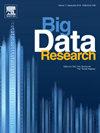预测期权价格:从布莱克-斯科尔斯模型到机器学习方法
IF 4.2
3区 计算机科学
Q2 COMPUTER SCIENCE, ARTIFICIAL INTELLIGENCE
引用次数: 0
摘要
在瞬息万变的金融市场中,准确的期权定价对投资者、交易员和金融机构来说仍然至关重要。传统上,Black-Scholes (B&;S)模型一直是期权定价的基石,它提供了一个基于数学和物理原理的坚实框架。然而,B&;S模型也有一些局限性,比如对欧洲期权的限制、没有股息、持续波动等。关于机器学习模型在金融领域应用的研究和学术文献正在迅速增加。本文的主要目的是对传统的B&;S模型和最常用的机器学习算法(如人工神经网络(ANNs))进行全面的比较分析。理由有二。首先,根据现实世界的复杂性来检验B&;S模型的假设,比如恒定的波动性和一个完全有效的市场,尽管人们认识到该模型几十年来一直被认为是一个支柱。其次,强调大数据的扩散和计算能力的进步推动了金融领域机器学习技术的兴起。这些算法在发现非线性模式和从大型数据集中提取信息方面具有卓越的能力,为传统的定量方法提供了令人信服的替代方案。机器学习提供了一种捕捉和建模这种复杂金融动态的新方法,可以产生更准确的定价模型。通过比较B&;S模型和一些机器学习方法,本文旨在利用真实数据揭示它们各自的优势、劣势和在期权定价背景下的适用性。通过严格的实证分析和绩效指标,我们的结果证明了使用机器学习技术的重要性,通过实现更高的预测精度,机器学习技术可以在预测期权价格方面优于或补充已建立的B&;S模型。本文章由计算机程序翻译,如有差异,请以英文原文为准。
Predicting option prices: From the Black-Scholes model to machine learning methods
In the ever-changing landscape of financial markets, accurate option pricing remains critical for investors, traders and financial institutions. Traditionally, the Black-Scholes (B&S) model has been the cornerstone for option pricing, providing a solid framework based on mathematical and physical principles. Nevertheless, the B&S model has some limitations, such as the restriction to European options, the absence of dividends, constant volatility, etc. Studies and academic literature on the application of machine learning models in the financial sector are rapidly increasing. The main objective of this paper is to provide a comprehensive comparative analysis between the traditional B&S model and the most commonly used machine learning algorithms such as Artificial Neural Networks (ANNs). The rationale is twofold. First, to examine the assumptions of the B&S model, such as constant volatility and a perfectly efficient market, in light of the complexity of the real world, even though it is recognized that the model has been known as a pillar for decades. Secondly, to emphasize that the proliferation of big data and advances in computing power have fuelled the rise of machine learning techniques in finance. These algorithms have remarkable capabilities in discovering non-linear patterns and extracting information from large data sets, providing a compelling alternative to traditional quantitative methods. Machine learning offers a new way to capture and model such complex financial dynamics, which can lead to more accurate pricing models. By comparing the B&S model and some machine learning approaches, this paper aims to shed light on their respective strengths, weaknesses and applicability in the context of options pricing using real data. Through rigorous empirical analyses and performance metrics, our results demonstrate the importance of using machine learning techniques that can outperform or complement the established B&S model in predicting option prices by achieving higher prediction accuracy.
求助全文
通过发布文献求助,成功后即可免费获取论文全文。
去求助
来源期刊

Big Data Research
Computer Science-Computer Science Applications
CiteScore
8.40
自引率
3.00%
发文量
0
期刊介绍:
The journal aims to promote and communicate advances in big data research by providing a fast and high quality forum for researchers, practitioners and policy makers from the very many different communities working on, and with, this topic.
The journal will accept papers on foundational aspects in dealing with big data, as well as papers on specific Platforms and Technologies used to deal with big data. To promote Data Science and interdisciplinary collaboration between fields, and to showcase the benefits of data driven research, papers demonstrating applications of big data in domains as diverse as Geoscience, Social Web, Finance, e-Commerce, Health Care, Environment and Climate, Physics and Astronomy, Chemistry, life sciences and drug discovery, digital libraries and scientific publications, security and government will also be considered. Occasionally the journal may publish whitepapers on policies, standards and best practices.
 求助内容:
求助内容: 应助结果提醒方式:
应助结果提醒方式:


